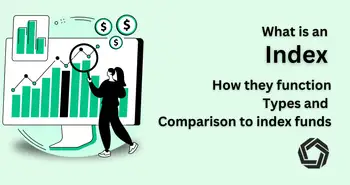The Benefits of Retroactive Public Goods Funding

Retroactive public goods funding is a revolutionary approach that has the potential to transform societies for the better. By allocating resources to public goods projects after they have already been completed, this funding model addresses the shortcomings of traditional funding methods and unlocks a range of benefits that extend to our economy, social fabric, and environment.
Understanding Retroactive Public Goods Funding
Before we delve into its benefits, let's first understand what retroactive public goods funding is all about. This innovative concept involves providing financial support for public goods projects after they have been completed. Traditional funding models often require upfront investment, making it difficult to allocate resources to projects that may not have a guaranteed return. Retroactive funding removes this barrier by allowing funding decisions to be based on projects' actual impact and success.
Definition and Concept of Retroactive Funding
Retroactive funding flips the script on traditional project financing. Instead of requiring funding upfront, it allows for post-completion assessment and allocation of resources. This means that projects are evaluated based on their demonstrated value and positive outcomes, ensuring that funding is awarded where it will make the greatest impact.
The Role of Public Goods in Society
Public goods play a vital role in society, as they provide benefits that cannot be easily confined to individuals or businesses. These goods, such as parks, schools, and infrastructure, enhance collective well-being and promote societal progress. However, inadequate funding often hampers the development of crucial public goods projects. Retroactive funding tackles this problem head-on by providing an innovative solution that encourages the creation and enhancement of these vital assets.
Imagine a bustling city with limited green spaces, where residents yearn for a breath of fresh air amidst the concrete jungle. With retroactive public goods funding, a visionary group of urban planners and environmentalists could transform vacant lots into vibrant parks, complete with lush greenery, walking paths, and recreational facilities. These parks would not only provide a sanctuary for city dwellers seeking solace in nature, but they would also contribute to the overall well-being of the community by improving air quality, promoting physical activity, and fostering a sense of community cohesion.
Furthermore, retroactive public goods funding could revolutionize the education system by empowering teachers and students with state-of-the-art facilities and resources. Imagine a school that, instead of struggling with outdated textbooks and cramped classrooms, becomes a hub of innovation and creativity. With retroactive funding, schools could invest in cutting-edge technology, modernize their infrastructure, and provide teachers with professional development opportunities. This would create an environment where students can thrive, explore their passions, and develop the skills necessary to succeed in the ever-evolving world.
The Economic Impact of Retroactive Funding
One of the key benefits of retroactive public goods funding lies in its positive impact on our economy. By reallocating resources based on project success, this funding model fosters an environment where meritorious initiatives are rewarded, spurring economic growth in the process.
Moreover, retroactive funding plays a crucial role in promoting innovation and efficiency within the economy. By incentivizing the continuation and expansion of successful projects, this funding mechanism encourages organizations to constantly strive for improvement and excellence. This culture of innovation not only drives economic growth but also enhances the overall competitiveness of industries, leading to long-term sustainability and prosperity.
Influence on National Economy
Retroactive funding enables governments to invest in projects that have already proven their worth. This approach reduces the risk associated with traditional upfront financing, making it more appealing for governments to support innovative public goods initiatives. As a result, the national economy thrives as funds are channeled towards strategies and endeavors that have already demonstrated their potential for success.
Furthermore, the impact of retroactive funding on the national economy extends beyond immediate financial gains. By fostering a culture of accountability and results-driven investment, this funding model sets a precedent for responsible resource allocation and strategic decision-making. This, in turn, enhances the overall economic stability and resilience of the country, ensuring sustainable growth in the face of changing market dynamics and global challenges.
Impact on Local Communities
Local communities are the bedrock of any society, and retroactive funding empowers them by providing much-needed resources for public goods projects that directly benefit their residents. From the improvement of community centers to the development of environmentally sustainable infrastructure, these projects enhance the quality of life for individuals and promote economic development at the grassroots level.
Moreover, the infusion of retroactive funding into local communities fosters a sense of ownership and pride among residents. By actively participating in the decision-making process and implementation of public goods projects, community members develop a stronger connection to their surroundings and a deeper commitment to sustainable development. This sense of community engagement not only drives economic growth at the local level but also cultivates a supportive and collaborative environment for future initiatives, ensuring long-term prosperity and well-being for all residents.
The Social Benefits of Retroactive Funding
Retroactive public goods funding not only boosts our economy, but it also yields tremendous social benefits that can shape the fabric of our society for the better.
Enhancing Quality of Life
Investing in retroactive funding means investing in people. By supporting the development of public goods that improve quality of life, such as healthcare facilities and recreational spaces, retroactive funding fosters a society where individuals can thrive and enjoy a higher standard of living.
Promoting Social Equity
Retroactive funding plays a crucial role in promoting social equity. By focusing on projects based on their merit and impact, rather than their initial financial backing, resources are allocated in a more equitable manner. This ensures that underserved communities and marginalized groups have equal access to transformative public goods that enhance their lives.
The Environmental Advantages of Retroactive Funding
Retroactive public goods funding is not confined to economic and social benefits alone. By embracing this funding model, we can also pave the way for a greener and more sustainable future.
Funding for Environmental Conservation
Investing in retroactive funding for public goods enables us to allocate resources to conservation projects aimed at preserving and protecting our natural environment. From reforestation efforts to the development of renewable energy infrastructure, retroactive funding empowers us to prioritize the health of our planet.
Sustainability and Retroactive Funding
Retroactive funding aligns with sustainability principles by ensuring that projects are assessed based on their long-term viability and positive environmental impact. By supporting sustainable public goods initiatives, such as eco-friendly transportation systems and energy-efficient buildings, retroactive funding contributes to a more sustainable future for generations to come.
Challenges and Criticisms of Retroactive Funding
While retroactive public goods funding holds great promise, it is not without its challenges and critics. Understanding these concerns is essential for further improvements and widespread adoption.
Potential Drawbacks and Limitations
One challenge of retroactive funding is the need for robust evaluation processes to ensure fairness and transparency. Additionally, allocating funding after project completion may result in delays and uncertainty during the implementation phase. However, these challenges can be addressed through effective project management and continuous improvement of funding mechanisms.
Addressing the Criticisms
Rather than dismissing criticisms of retroactive funding, it is crucial to actively address concerns and continuously refine this funding model. By investing in rigorous evaluation processes and building strong accountability frameworks, we can mitigate risks and maximize the positive impact of retroactive public goods funding.
As an expert in public goods funding, I have seen firsthand the transformative power of retroactive funding. I recall a project in a local community where retroactive funding was employed to enhance a neglected public park. The space was revived, and it quickly became a hub of community activity. Families enjoyed picnics on the lush lawns, children played on the state-of-the-art playground, and seniors found solace in the peaceful surroundings. The positive impact on the community‘s well-being and cohesion was palpable, thanks to retroactive funding.
FAQ: Frequently Asked Questions
Q: What is retroactive public goods funding?
A: Retroactive public goods funding is a funding model that provides financial support for public goods projects after they have been completed, allowing for resources to be allocated based on project success and demonstrated impact.
Q: How does retroactive funding benefit the economy?
A: Retroactive funding stimulates economic growth as it rewards meritorious public goods projects, reducing the risk associated with upfront financing and encouraging the government to support innovative initiatives.
Q: How does retroactive funding promote social equity?
A: Retroactive funding promotes social equity by allocating resources based on project merit rather than initial financial backing, ensuring that underserved communities and marginalized groups have equal access to transformative public goods.
Q: What are the environmental advantages of retroactive funding?
A: Retroactive funding enables investment in environmental conservation projects and promotes sustainability by prioritizing the development of eco-friendly public goods initiatives.
Q: What are the challenges of retroactive funding?
A: Challenges of retroactive public goods funding include the need for robust evaluation processes and potential delays during project implementation. However, these challenges can be addressed through effective management and improved funding mechanisms.
With retroactive public goods funding, we have an opportunity to revolutionize the way we invest in our society and planet. By embracing this innovative funding model, we can unlock economic prosperity, foster social equity, and build a sustainable future for generations to come.
As we consider the transformative potential of retroactive public goods funding, it's clear that innovation and forward-thinking are key to driving progress. In the spirit of embracing groundbreaking models, discover how Morpher is revolutionizing the investment landscape. With zero fees, infinite liquidity, and the power of blockchain technology, Morpher offers a unique trading experience across a multitude of markets. Whether you're interested in stocks, cryptocurrencies, or even NFTs, Morpher's platform is designed to democratize trading for all. Sign Up and Get Your Free Sign Up Bonus today to start trading with unparalleled flexibility and control. Join Morpher in shaping a future where innovation leads to economic prosperity and sustainability.

Disclaimer: All investments involve risk, and the past performance of a security, industry, sector, market, financial product, trading strategy, or individual’s trading does not guarantee future results or returns. Investors are fully responsible for any investment decisions they make. Such decisions should be based solely on an evaluation of their financial circumstances, investment objectives, risk tolerance, and liquidity needs. This post does not constitute investment advice.

Painless trading for everyone
Hundreds of markets all in one place - Apple, Bitcoin, Gold, Watches, NFTs, Sneakers and so much more.

Painless trading for everyone
Hundreds of markets all in one place - Apple, Bitcoin, Gold, Watches, NFTs, Sneakers and so much more.









